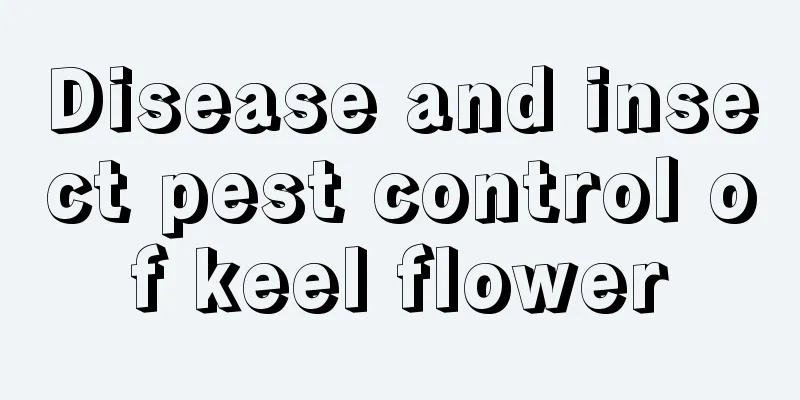Disease and insect pest control of keel flower

1. Common diseases1. ScabCharacteristics: This disease mainly attacks the branches and stems of flowers. There will be many scattered or clustered brown spots on them, and the epidermis near the spots will be concave. treat: (1) If the dragon bone flower has just been infected, you can use a sharp knife to clean and burn the brown spots, and then apply Bordeaux slurry to the infected area. (2) Spray the diseased area and surrounding branches and leaves once every week, and then once every two weeks in the later stage. 2. AnthraxCharacteristics: It mainly attacks the fleshy stems of flowers. The spots formed by this disease are relatively large, with a diameter of 2-3 cm. They are semicircular or elliptical in shape. The color is brown and will turn grayish white later. treat: (1) Pay more attention to the plant in daily life. If you find that it is sick, cut off the diseased stems and burn them. Apply copper oxychloride solution every 5 days. (2) If you want to propagate, you should choose branches that are not diseased, soak them in 70% thiophanate-methyl and 75% chlorothalonil for 30 minutes and then dry them. (3) If the disease has just occurred, mix 30% copper oxychloride with 70% mancozeb, apply it once every ten days, and spray 2-3 times. 2. Common Pests1. Dragon bone flowers are rarely threatened by pests. If they are infested with white wireworms, white grubs, and mole crickets, you can effectively stop them by watering the roots with a thousand times concentration of insecticide. 2. If the ventilation in the room is not good enough, red spider mites are likely to damage the top of the plant. If you find that the top is reddish brown and has spider webs, you can use diazinon to treat it. 3. If there are aphids or scale insects, you can melt the laundry detergent and spray it. Because it is an alkaline substance, it will alkalize the flower pot, so it is best to wrap the flower pot with a plastic bag before spraying. Detergent can block the pores of pests, making them unable to breathe and causing them to die. After killing insects, wash the leaves of the flowers. 4. If you find a snail, it will eat the stems and leaves of the flowers, so you can catch it yourself. Be sure to be careful that if you accidentally remove the branches and leaves of the flower and the juice leaks out, do not get it in your mouth. Wash your hands immediately after handling it, otherwise you will feel numb. |
<<: Disease and Pest Control of Viburnum
>>: Pest and disease control of Hawaiian coconut
Recommend
Calendula cutting method
Branch selection We usually call the branches for...
How to breed red larvae
1. Beheading reproduction 1. Choose healthy branc...
Why are your hydroponics turning yellow and rotting, but hers is flourishing?
Choose cold-resistant plants When purchasing hydr...
Cutting method of Brazilian iron
Cutting propagation method of Brazilian iron The ...
What to do if the catnip drops its leaves
Treatment based on the cause of hanging leaves In...
Is the correct way to water flowers with cigarette butt water harmful to plants?
Cigarette butt water is very good for watering fl...
Is Tang fan suitable for open-heel training?
Characteristics of the fleshy roots of the Chines...
How to grow Magnolia arborvitae
1. Maintenance methods 1. Temperature: Magnolia g...
How to pinch the tip of Liubeili
Six times profit topping requirements In the actu...
How often should I water my rubber tree? Does it need more watering?
How often should you water your rubber tree? Wate...
How to grow Huoxuedan
1. Maintenance methods 1. Temperature: Danshen li...
Will the green radish die if it wilts after repotting?
1. Will I die? It may be normal for the green ivy...
How to cut the green radish in hydroponics
1. Cutting method 1. To grow green radish in wate...
Soak the chestnuts in water, they will sprout in 7 days and emerge as seedlings in 30 days. When they grow into potted plants, they are more beautiful than green radish!
Now life has become more convenient. Many snack m...
How often should jasmine be fertilized and what kind of fertilizer should be applied
How often should jasmine be fertilized? 1. The me...









